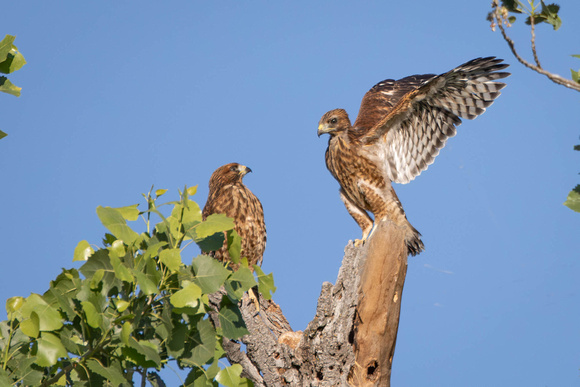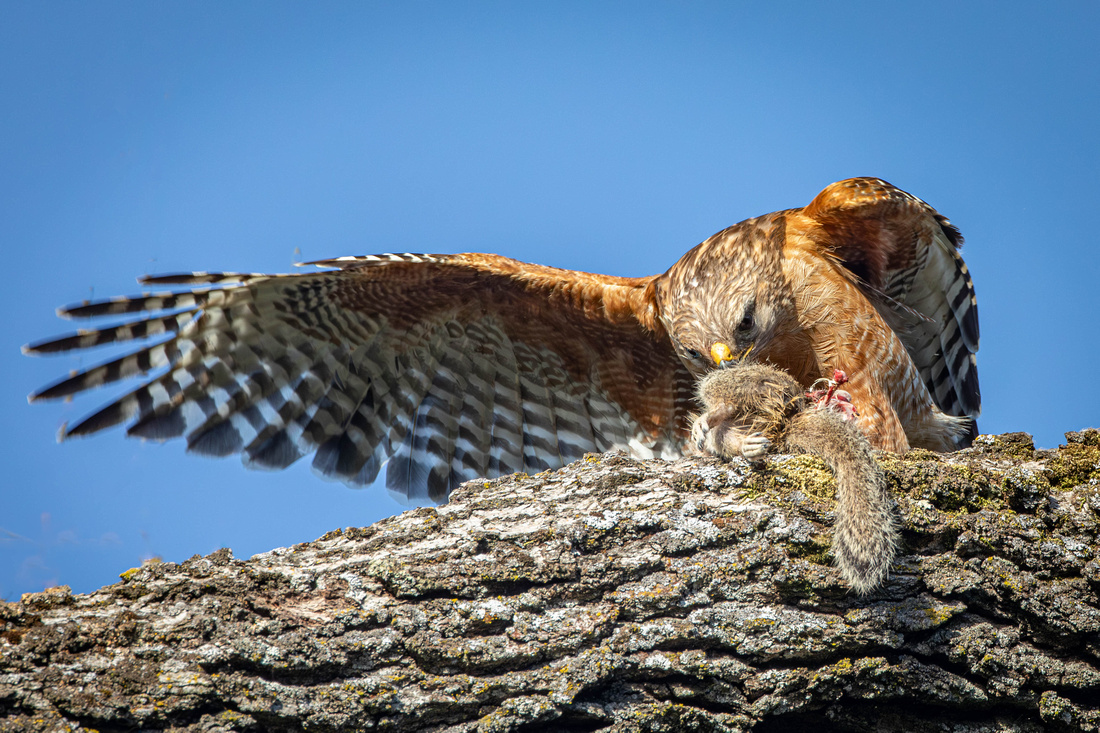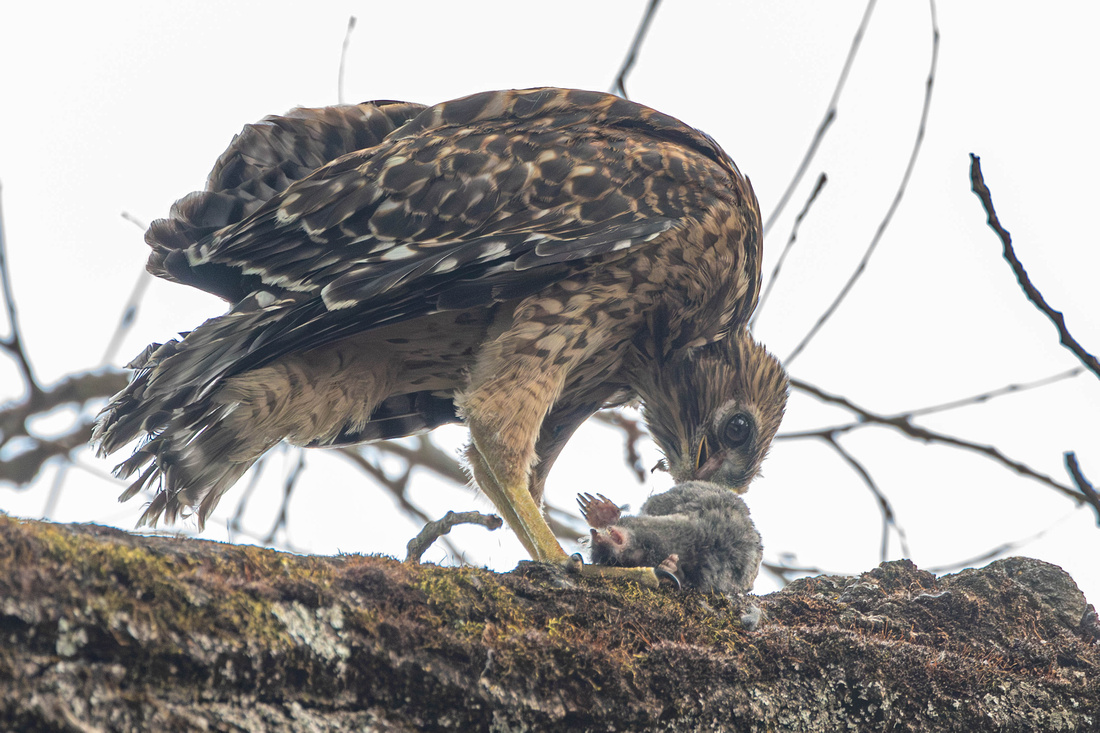Red-shouldered Hawk pairs chapter 5
Two mating pairs of Red-shouldered hawks
Text and photos by Heather Cline
Chapter 1 | Chapter 2 | Chapter 3 | Chapter 4
If you are reading this post but haven't seen the previous chapters, you can check them out using the links above.
This post is intended to provide some updates on what I have seen since Chapter 4 was published.
It's hard to believe it has been 4 months since I started watching (stalking really) these two pairs of Red-shouldered hawks. The nestlings are now fledglings, and they are becoming more independent every day. They are flying and even hunting. In fact, they are doing such a great job that it's getting increasingly more difficult to locate them. They used to hang out together in the nest, then a nearby tree, and now they are dispersing - and blending in quite well. Their calls to their parents are the only thing that allows me to locate them.
I found a couple sources that said the juveniles will stay within a few miles of their original nest site until they begin to breed between 1-3 years of age. So - I'm hoping that I will catch of glimpse of the juvenile hawks in the area over the coming months.
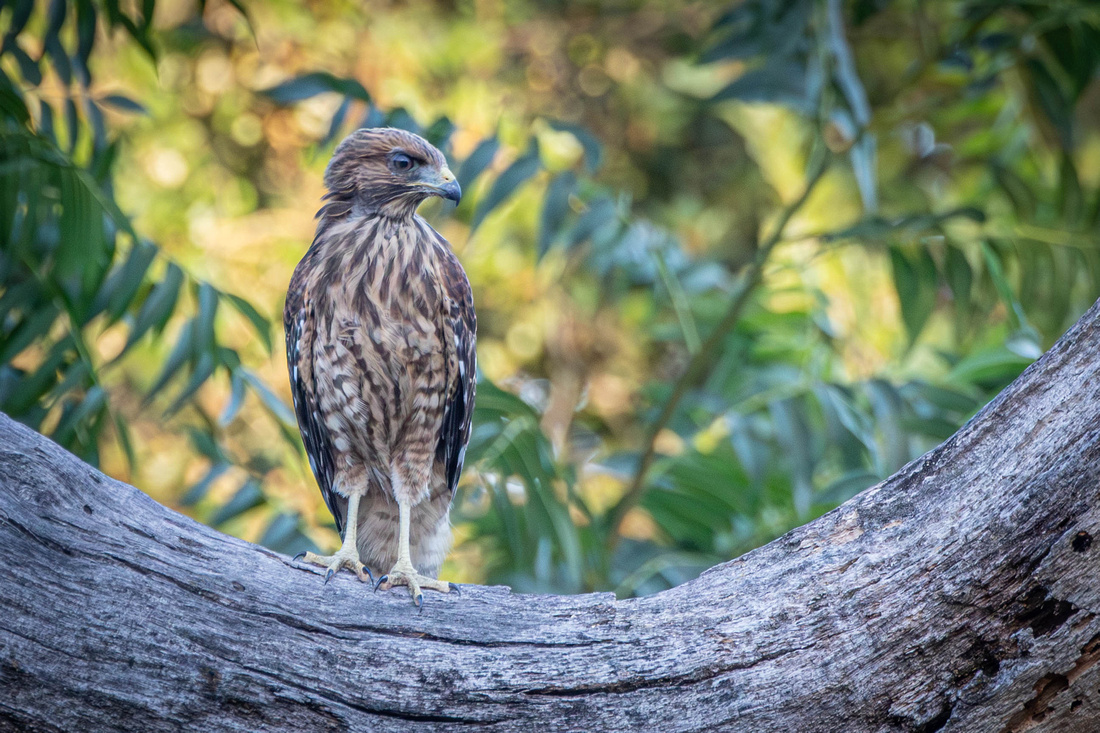 
One of Bea and Bert's fledglings - already quite the model! |
Both pairs hatched 4 offspring each. Ana and Aston's appeared to be slightly farther along the Bea and Bert's, because they left the nest about a week earlier and ventured farther faster - although it appeared both clutches started hatching at the same time.
I've wondered if Ana and Aston might be veteran parents and Bea and Bert might be first-time parents or at least less experienced. Ana and Aston refurbished their nest in an area with lots of dense trees, making it easy for youngsters to explore their area by making short hops from branch to branch versus committing to a longer flight. Bea and Bert built their nest from scratch. It's possible that their previous nest was destroyed, or one/both lost their mate, and this was their first season together, but their nest doesn't have a lot of dense trees around it. The fledglings must take a leap of faith to reach the nearby trees. That must be terrifying for a bird the first time!
|
|
|
One day, I observed Bert with a ground squirrel that he had partially consumed. He was in a tree that was visible from the nest but perhaps too far for the youngsters to fly to. They cried as he flew towards the nest with the squirrel and I thought he would drop it in the nest for them but instead, he landed on a nearby branch and as the fledglings worked their way towards him, he flew off into another tree. I suspect he was trying to encourage the fledglings to start flying to other trees, but they looked at him confused and helpless. They definitely did not look ready to make that leap.
|
Bert with his ground squirrel before he took it to the nest |
Another day, I was watching Ana and Aston's youngest in the nest. I obviously don't know who is a male and who is a female but I started calling him/her "Junior" because of the drastic size and develop gap between him and his siblings. They were off in a nearby tree where I watched the parents bring mice to them but Junior was all alone in the nest. I never once saw the parents bring food to the nest and I started worrying that they were only bringing food to the fledglings that had graduated to short flights and semi-independence. I was so worried that I called a couple of experts and they assured me the parents were very likely still feeding the youngest in the nest. The nest morning, when I went to the nest, I couldn't find Junior but after several minutes of frantic searching, I realized he was perched up above the nest! He was getting ready to graduate himself - and he did. It didn't take long before he was in what I started calling "the feeding tree".
|
"Junior" in the feeding tree doing his best to eat a vole that his parent brought to him (by the way - I completely missed the hand off!) |
I still see Bea, Bert, Ana, and Aston out hunting but it's gotten much more difficult to track them with the dense foliage. Having spent a lot of early mornings in the park, I am extremely confident there is abundant food sources for both pairs, all their offspring and neighboring hawks. The amount of mice, ground squirrels, and lizards I see is staggering. I can see why the hawks make their homes there - and I'm grateful for it because seeing them "do their wildlife thing" each morning has been pretty amazing.
|
|
|
|
Aston is a brutal hunter and I am confident he is teaching his offspring these same skills. I imagine as he descends on his prey, he says, "No mercy". One morning when I was out walking, I saw him dive from a branch to the ground - then up into a tree. I knew he had captured something, but it wasn't until I later looked at the photo that I realized he had captured not one, but two small squirrels. He was having trouble holding on to both of them.
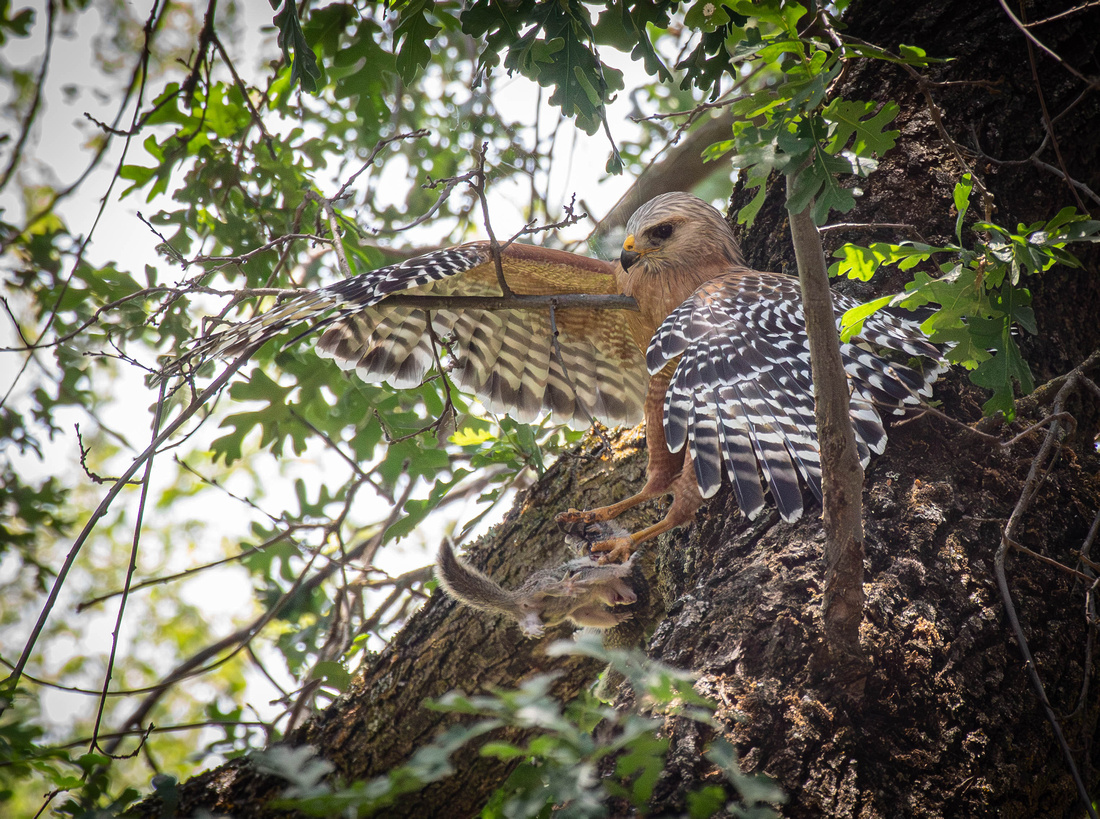  Aston with ground squirrels
Aston with ground squirrels |
If you look at the photo above, you can see the rusty-reddish feathers that give these hawks their names. The juvenile below will not develop those colors until the autumn of their second year. That makes it a little easier to identify a juvenile versus an adult, especially with how big they have already become.
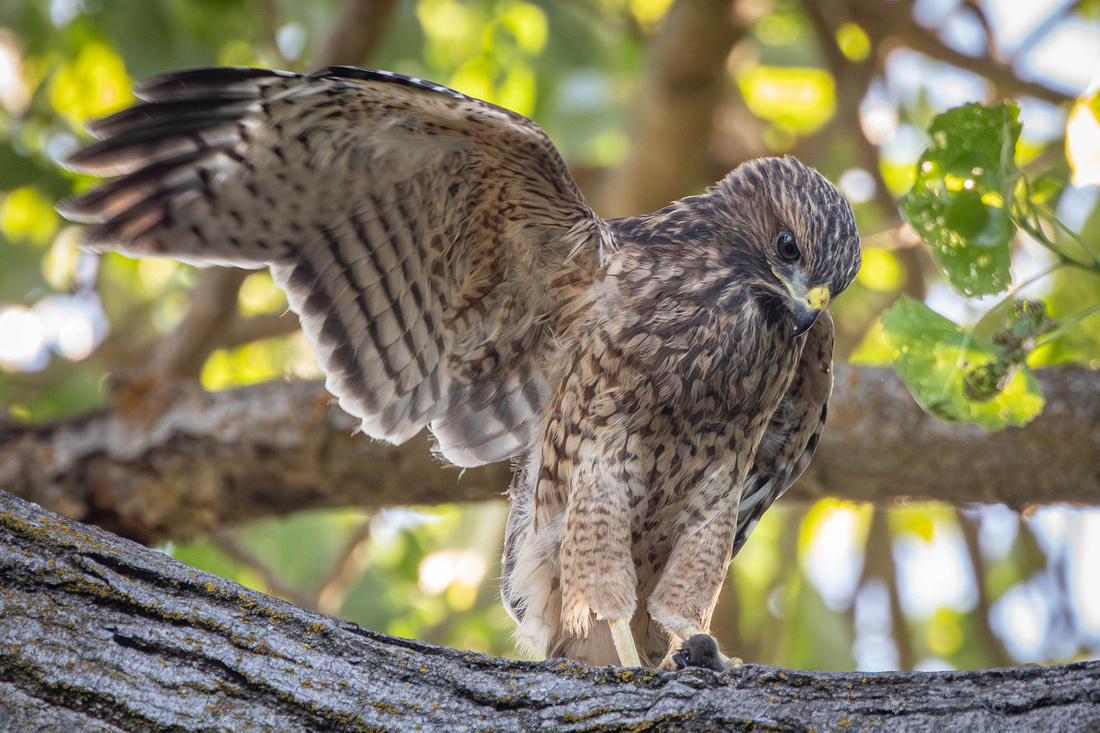 
One of Ana and Aston's fledglings with a mouse. These hawks take their meals seriously. |
I hope you have enjoyed taking this little journey with me. I'm really hopeful that I can start the "hawk watch" again in 8 months! Until then, I'll continue to look for these family groups around the park and I'll post any updates if something significant happens. In the meantime, I've started my 'fawn watch'! To see the full collection of red-shoulder hawk images, click here.
Comments
Truman
